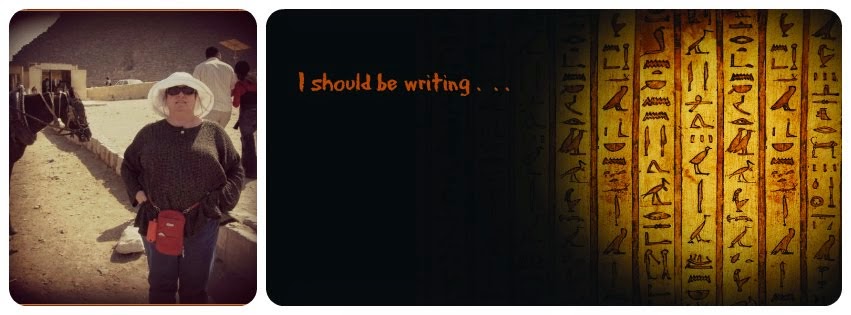Lots of news this week required a second edition.
Astounding Animation Glimpses Into Amarna, The Royal Egyptian City Of Akhenaten
The royal city of Amarna was a relatively ‘new’ settlement if viewed from the perspective of Ancient Egyptian history. Built almost 1,200 years after the Great Pyramid (circa 1346 BC), the entire city was actually constructed on a virgin site, on the orders of the Pharaoh Amenhotep IV – who was later known as Akhenaten. And while this urban scope was situated almost midway between Cairo (Giza) and Luxor, on the east bank of the Nile River (presently in the Egyptian province of Minya), the city both inspired and instigated various sections of the Egyptian elite – since it was dedicated to
How the Met Convinced the U.S. Government That the Temple of Dendur Belonged in New York
The Temple of Dendur in situ, ca. 1865–1885. Photo by Antonio Beato. Courtesy of the Metropolitan Museum of Art.
In the summer of 1968, a freighter set sail from the Mediterranean Sea to New York City. Stowed in its hold were canned tomatoes, maraschino cherries, wheels of cheese—and a centuries-old Nubian temple, dismantled and packed away into 640 crates for its international voyage.
These ancient sandstone blocks, 800 tons in total, were a gift from Egypt to the United States. A year earlier, President Lyndon B. Johnson had declared that the Metropolitan Museum of Art would serve as the Temple of Dendur’s new home; this month marks the 50th anniversary of that decision. For the occasion, the museum has cleaned the temple’s sandstone facade and unearthed a wealth of archival material.
Exhibit illustrates magical powers of Book of the Dead in ancient Egypt
Photo by
Jean Lachat
In ancient Egypt, you did not go to the afterlife empty-handed. The Book of the Dead, a collection of spells and charms, was there to guide you.
Starting Oct. 3, visitors to the Oriental Institute at the University of Chicago will have a unique opportunity to peruse copies of the Book of the Dead: Two 2,200-year-old papyri, each more than 30 feet long and beautifully illustrated with texts and images. They are on display in their entirety for the first time at a museum, accompanied by the mummy of a woman who lived over 2,000 years ago, as well as statues, stelae, scarabs, magic bricks, ushabtis (small funerary figurines) and other artifacts.
6 of Egypt's most fascinating archaeological discoveries
For numerous reasons, Egypt is a fascinating country.
In terms of history, it's one of the richest countries in the world and there is no shortage of places to visit to experience that wealth.
Egypt thrived for thousands of years as an independent nation whose culture was famous for great human advances in every area of knowledge, from the arts and sciences to technology and religion.
What it's like to crawl inside a 3,500-year-old Egyptian tomb
A man in a gray robe and white headscarf brushes the dust, undisturbed for thousands of years, off a human skull, one of many messily discarded by grave robbers.
"They were searching for gold and jewelry, and when they didn't find it they just threw everything over here," says Ali Farouq al-Gaftawi, the veteran foreman at the excavation at Draa Abu Al-Naga, a barren desert hillside overlooking the lush, green Nile Valley.
Grand Egyptian Museum receives artefacts ahead of launch
Ten ancient Egyptian artefacts, including a part of the Sphinx’s beard, were moved to the new Grand Egyptian Museum in Cairo on Wednesday.
The new museum is set to be the world’s largest archaeological museum when it opens in 2018.
“Ten heavy artefacts are being moved from the Egyptian museum in Tahrir to the Grand Egyptian Museum. These artefacts will be displayed near the grand staircase which will lead to all of the main exhibition halls,” said Tarek Tawfiq, General Supervisor, Grand Egyptian Museum
How were the Egyptian pyramids built? Why and when were they constructed, how many are there and who built them?
Image-Getty Contributor
THEY'RE one of the most impressive sights on Earth, and the only remaining Ancient Wonder of the World. Here's everything you need to know about the incredible Egyptian pyramids
Clues to ancient past—baby mummy, dinosaur skulls scanned
The mummified remains of a 7-month-old baby boy and pieces of skull from two teenage Triceratops underwent computed tomography (CT) scans Saturday, Sept. 16, at Washington University School of Medicine in St. Louis, in hopes researchers could learn more about the ancient past. The project is a collaboration between the Saint Louis Science Center and the School of Medicine.
Sphinx, Baboon and Cat Statues Found in Ancient Egyptian Burial
After years of being washed, perfumed and fed in ancient Egypt, the statue of a revered Egyptian deity was given a proper burial with other "dead" statues more than 2,000 years ago, a new study finds.
Ancient Egyptians buried the statue of the deity Ptah — the god of craftsmen and sculptors — with other revered statues, including those of a sphinx, baboon, cat, Osiris and Mut, in a pit next to Ptah's temple.
Kinross Wolaroi School musical takes audiences back to ancient Egypt
Year 5 and 6 students from Kinross Wolaroi School have put on a singing and dancing spectacular as part of their school music and there is one show left of Slaves.
Year 6 teacher Romko Hordynsky has been writing and directing the schools musicals for about 30 years and this year was no different.
Along with writing the plot, Mr Hordynsky also created the musical score for the latest production, Slaves, set in Ancient Egypt.
Under the Protection of the Gods painting by 'Howard Carter 1908'



















































